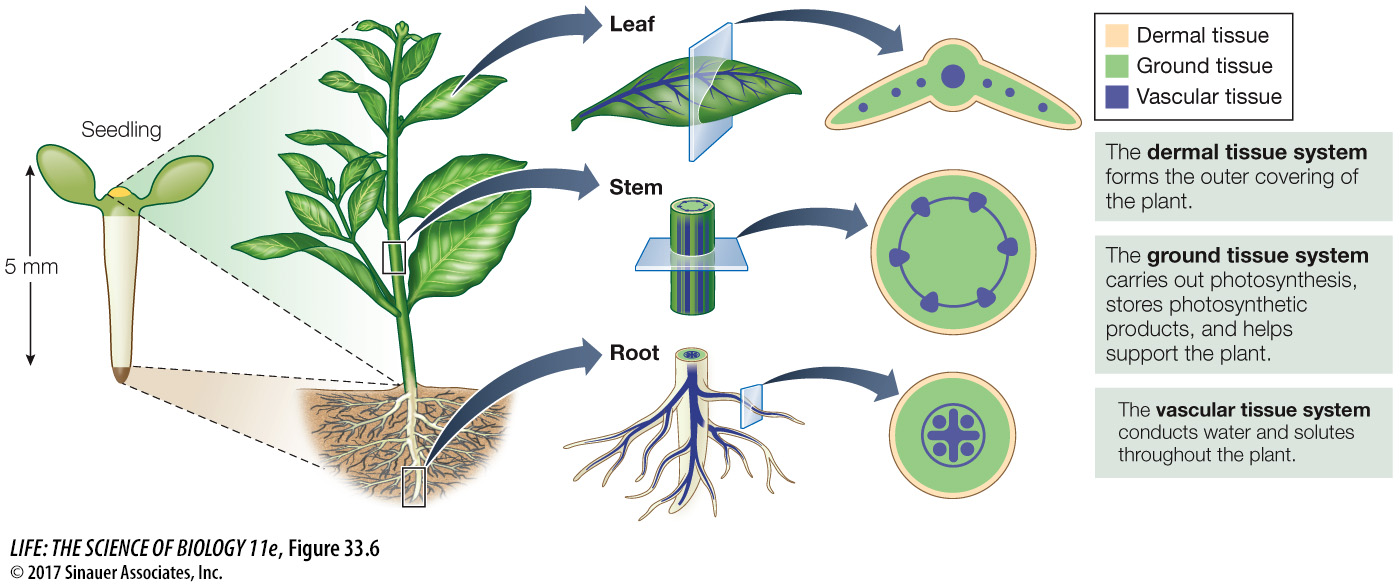key concept 33.2 Plant Organs Are Made Up of Three Tissue Systems
By the end of embryogenesis, both the apical–
focus your learning
Ground tissue forms most of the plant body and includes parenchyma, collenchyma, and sclerenchyma. The dermal and vascular systems have parenchyma and sclerenchyma.
Vascular tissue consists of xylem and phloem, which are the plant’s transport system.
As Focus: Key Figure 33.6 illustrates, the three major plant tissue systems develop in a radial pattern in the embryo, establishing a concentric arrangement of dermal, ground, and vascular tissues. From these tissue systems will arise the roots, stems, and leaves of the adult vegetative plant body.
focus: key figure

Question
Q:What is a major difference between cells in the ground tissue in the leaf compared to the root?
The leaf cells contain chloroplasts and carry out photosynthesis.